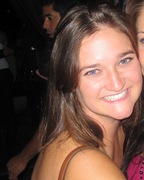Many musicians dread the diagnosis of focal dystonia, the uncontrolled contraction or twisting of a certain muscle group (most often the group of muscles in the hand), as it may have the power to curb their career indefinitely. Often affecting the function of the fingers, the highly repetitive motions associated with playing an instrument can cause these involuntary contractions.
For a guitarist, the brain may over compensate the movements of the fingers to make it easier for the guitarist to play certain notes. This, in fact, does not help but causes the symptoms of focal dystonia to be aggravated. Often the symptoms only occur when the unnatural movement occurs but it is most likely at this time that the affects are the most detrimental.
At first it may seem that the problem lies in the concentrated area of the muscle group but it begins in the mapping system of the brain that controls fine motor skills and sensory information. A thin layer of tissue, called the sensorimotor cortex, lies above the brain and categorizes the movements of individual muscle function. During Focal Dystonia the categories are no longer distinct and unable to be controlled accurately.
The brain is constantly adapting and developing to the human it belongs and, for the most part, this is a very beneficial thing for our overall functionality and well being. But the brains of those who have developed focal dystonia have adapted to the unnatural movements of the muscle group and, to make it easier for the body, have created a type of shortcut.
To treat focal dystonia, many opt for botox injections, paralyzing the unnatural contractions of the affected muscle. Because the problem lies in the brain, not in the muscle itself, the condition is not fixed but rather only appeased temporarily. As this is not a cure for Focal Dystonia further research has been conducted to reverse the brain’s adapted function to its original utility. A program developed by UCSF researcher, Dr. Nancy Byl, is called sensorimotor retraining. In short, the brain must re-learn the desired functions by exaggerating the sensory function of the brain. Treatment includes the everyday natural use of the muscles, sending reminders to the brain of how these muscle groups should move and feel.
Gradual changes to the muscle functions that have become second nature to you and your brain are imperative to the reversal of Focal Dystonia. The symptoms of this muscle condition can be frustrating and the treatments, seemingly endless but as more research is being conducted more effective steps for management of the disorder becomes available every day.



Add a CommentComments
There are no comments yet. Be the first one and get the conversation started!